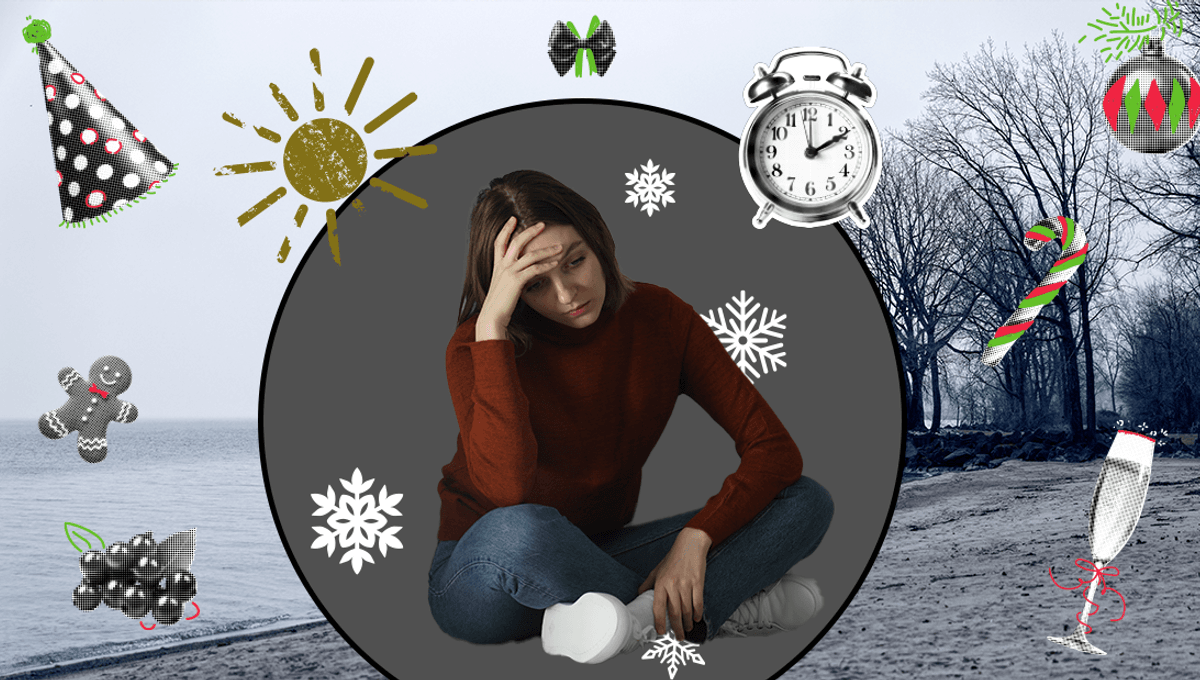
Holiday festivities might be in full swing, but this time of year isn’t necessarily packed with cheer. For those with seasonal affective disorder (SAD), the changing of the seasons can bring significant shifts in their mood, sleep, and energy levels.
What is seasonal affective disorder?
Rather than a standalone diagnosis, SAD is currently considered a subtype of recurrent major depressive disorder or bipolar disorder that has a seasonal pattern, meaning that symptoms of depression arise at particular seasons or times of year and last for about four to five months. Most commonly, symptoms begin in the late fall or early winter – this is known as winter-pattern SAD.
However, less commonly, some people with SAD experience summer-pattern SAD, where symptoms start in the late spring or early summer and alleviate later in the year.
Symptoms of SAD
The symptoms of SAD can depend on the individual and whether they’re affected by the winter or summer pattern of the conditions. They also don’t necessarily show up every year.
However, there are some symptoms that may affect both groups, including: persistent low mood; low energy; difficulty concentrating; loss of interest and pleasure in things once enjoyed; feeling guilty or hopeless; and irritability.
Those with summer-pattern SAD may experience symptoms including trouble sleeping and poor appetite, whilst those with the winter form might see the opposite, with symptoms such as oversleeping and a higher appetite for carbohydrates.
Causes and risk factors
The exact cause of SAD isn’t known – the basis for mental health conditions is often complex, with no single root – but it’s widely theorized that changes in sunlight exposure may play a role.
For example, sunlight has a significant influence on our body clock, or circadian rhythm, which governs many functions within the body. Since there’s generally less exposure to sunlight in the winter months, it’s thought that this could disrupt the body clock and thus lead to symptoms of winter-pattern SAD.
It’s also been theorized that people with SAD may have altered levels of two key molecules within the body: serotonin and melatonin (which is synthesized in the body from serotonin). Both are involved in sleep, but serotonin also has an important role in regulating mood.
The idea is that those with winter-pattern SAD may have decreased serotonin levels and/or produce more melatonin than usual, leading to disruption of the body’s normal daily rhythm and symptoms such as fatigue and low mood.
There appear to be certain risk factors for SAD too; women, for example, are thought to be more commonly affected than men, as are people with existing depression or bipolar disorder. It is also thought to occur more frequently in people living far from the equator, where the daylight hours get much shorter in the fall and winter.
Treatment
Perhaps one of the most well-known approaches to treating SAD is light therapy. This can mean exposure to sunlight, or if that’s not possible, medically approved light boxes or “SAD lamps”, as they’re often advertised.
However, the UK’s National Health Service, though listing light therapy as a potential treatment, also says that there’s mixed evidence as to whether it’s actually effective.
For example, a recent meta-analysis of 19 randomized controlled trials found evidence suggesting that light therapy is effective in the short-term, but also that the quality of evidence wasn’t all that high; many of the studies had relatively small sample sizes and used different methodologies, making their findings somewhat unreliable. The authors call for larger clinical trials and also further investigation into the effectiveness of treating SAD in the long term.
Antidepressants may also be prescribed as a treatment, though it’s important to note that it can take up to 4 to 6 weeks for their effects to fully kick in, and for many people, it can require a bit of trial and error to find the medication that works best for them. In addition, or on its own, people with SAD may be offered psychotherapy, such as cognitive behavioral therapy.
There are also a variety of patient-led methods that may help to ease symptoms, such as taking care of physical health, not taking on too many demands, and doing the things they know might help them feel better.
This doesn’t mean that people should suffer alone, however; if someone thinks they may have SAD, it’s important to speak to a healthcare provider. Getting help early is a key part of recovery.
All “explainer” articles are confirmed by fact checkers to be correct at time of publishing. Text, images, and links may be edited, removed, or added to at a later date to keep information current.
The content of this article is not intended to be a substitute for professional medical advice, diagnosis, or treatment. Always seek the advice of qualified health providers with questions you may have regarding medical conditions.
If you or someone you know is struggling, help and support are available in the US at the National Suicide Prevention Lifeline on 1-800-273-8255. In the UK and Ireland, the Samaritans can be contacted on 116 123. International helplines can be found at SuicideStop.com.
Source Link: Seasonal Affective Disorder: Here’s What To Know